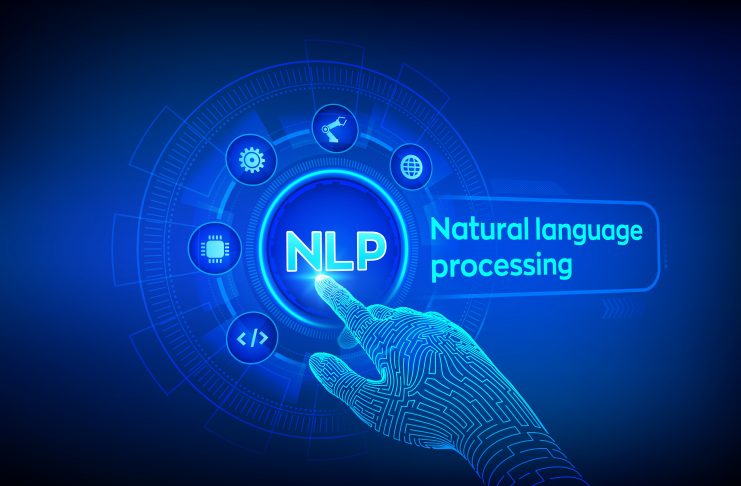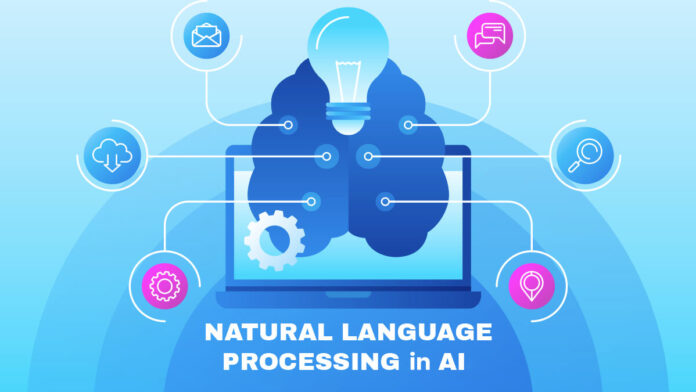Nowadays, data is essential. Facts and figures are the lifeblood of any successful enterprise. There is plenty of information available. However, it is poorly arranged. And that is when natural language processing in Artificial Intelligence comes into play.
So, if you are wondering how Natural Language Processing in AI works and what its role is, then read this post. In this post, we shall discuss everything about Natural Language Processing, including its role.
Lets get started…
Table of Contents
- What exactly is “Natural Language Processing” (NLP)?
- What is the mechanism of NLP and how does it function?
- Components of Natural Language Processing (NLP) in Artificial Intelligence
- What are the Advantages of Using NLP?
- Natural Language Processing and Its Varied Approaches
- Practical Applications of Natural Language Processing
- How is Natural Language Processing used in conjunction with AI?
What exactly Natural Language Processing Is?
This is a subfield of Artificial Intelligence (AI). This technology is built to study how machines may learn to interpret human speech and writing.
It gives computers the ability to comprehend spoken human language. The primary goal of NLP is to develop computer programs that are able to comprehend written language and then carry out activities such as automatic spell checking, text translation, topic classification and so on.
AI is helping companies manage large amounts of unorganized data and automate daily tasks. The goal is for machines to talk with humans in a natural way like Siri and Alexa. AI tools help answer customer questions, improve hiring by analyzing resumes on social media sites like LinkedIn and make writing easier with tools like Grammarly, which correct errors and simplify complicated text.
AI is improving efficiency by analyzing data, fixing problems faster and predicting issues before they happen. Chatbots powered by AI provide quick help, while automation handles repetitive tasks, allowing professionals like Ratcliff IT to focus on more complex problems. As more companies use AI, the combination of human expertise and technology is making IT services faster and more effective.
What is the mechanism of NLP and how does it function?
It’s studies how machines can understand spoken language. In other words, computers can interpret human speech, make judgments and take action based on that information. Next, the tool communicates the data in a human-friendly format.
It’s uses AI to take human-generated data (spoken or written) and transform it into a form that a machine can understand.
In the same way that people have a brain to process information, computers use a program to analyze data. Sometimes throughout the processing, the input is transformed into a form the computer can read.
Data pretreatment and algorithm development are the two pillars of natural language processing.
The process of “cleaning” and preparing text data so that machines can examine it is known as data preparation.
With proper preprocessing, data is transformed into a usable form and textual features accessible to an algorithm are brought to light. Some examples of possible approaches are:
Tokenization: A text is segmented when it is divided into manageable chunks.
Stop Word Removal. This process involves omitting frequently used words from a document in order to concentrate on the more informative, niche words.
Lemmatization and Stemming: As the name says, during this step, words are broken down into their simplest components for easier analysis.
Speech Annotations: Words, such as nouns, verbs and adjectives, are marked according to their part of speech.
An algorithm for further processing the data is then devised after it has been cleaned and prepared. Among the many algorithms available for this, two stand out as the most popular.
System based on rules: This system employs well-crafted linguistic rules.
This strategy was utilized early on in the evolution of NLP and it is still employed today.
System based on machine learning: Algorithms for machine learning employ statistical methodologies. They learn to do jobs based on the training data they are given and when more data is processed, they change their approaches. It’s algorithms develop their own rules through repetitive processing and learning using a blend of deep learning, machine learning and neural networks.
Components of Natural Language Processing in Artificial Intelligence
It comprises two components, namely: Natural language generation (NLG) and Natural language understanding (NLU)
Natural language generation (NLG): NLG is a technique for generating natural language (meaningful phrases and sentences) from data. It has three phases: text planning, sentence planning and text realization.
- Text Planning: It involves retrieving relevant content. Planning a sentence involves forming meaningful phrases and establishing its tone.
- Text Realization: It involves mapping sentence structures to sentence plans.
NLG applications include chatbots, analytics platforms, machine translation tools, voice assistants, sentiment analysis platforms and AI-powered transcription tools.
Natural Language Understanding (NLU): By extracting metadata from the material, NLU allows machines to comprehend and interpret human language. NLU aids in analyzing various aspects of language and mapping natural language input to valid representations.
What are the Advantages of Using NLP?
Companies rely heavily on data that is largely textual yet lack an effective means of processing it in bulk. Many internet records and database entries are written in plain English and until recently, businesses had no reliable way to parse and make sense of this information. When dealing with such situations, It’s comes in handy.

In human communication, it is common to encounter components of ambiguity, which machine learning algorithms have historically struggled to interpret. The advancement of deep learning and other machine learning techniques has made it possible for computers to comprehend them accurately. These enhancements allow for a much broader and deeper analysis of data.
Here are some of the advantages of Natural Language Processing in AI:
- Its enables computers to have more natural conversations with people. Rather than being a string of symbols, it makes use of actual words.
- It is able to automatically create an understandable summary of a larger, more complicated original text.
- It offers enhanced accuracy and efficiency in documentation.
- It can be used with personal assistants like Alexa to improve its understanding of spoken words.
- It allows businesses to employ chatbots for customer service, streamlines sentiment analysis and yields in-depth analytics insights that were previously unattainable owing to data volume.
Natural Language Processing and Its Varied Approaches
It’s makes extensive use of syntax and semantic analysis.
Syntax refers to how a sentence is put together grammatically. To evaluate the meaning of a language according to its grammar, NLP employs the use of syntax.
Techniques used in syntax include:
Parsing. A sentence’s grammar is broken out here. For instance, “The girl danced” is fed into the algorithm. The process of parsing entails identifying the many parts of speech in this sentence, such as the noun girl and the verb dance. This is helpful for downstream processing jobs that require more sophistication.
Word Segmentation. Word segmentation involves identifying and separating individual words. New words are constructed here by taking existing text strings as their basis.
Sentence Splice. It’s useful for breaking up long texts into manageable chunks. This text is then placed into the system, “The girl danced. The audience praised.” The system is able to identify the period that serves as the sentence break.
Morphological Segmentation. The building blocks of words are thus broken down further, called Morphenes. For instance, “unrecognizable” into “un[[re]cognize]]able,” where “un,” “re,” “cognize,” and “able” are all interpreted as morphemes. Machine translation and voice recognition might benefit greatly from this.
Stemming. This separates inflected words into their base forms. The algorithm would understand that “danced” comes from the word “dance” in the phrase “The girl danced.” The algorithm recognizes that despite the varied letter combinations, they both represent the same concept.
Deep learning, a type of AI that analyses data patterns to increase program comprehension, underpins current processing methods. One of the key challenges of this, compiling this kind of enormous data set because deep learning models require a lot of labeled data for it’s algorithm to train on and detect meaningful correlations.
Earlier attempts at natural language processing relied more on a rules-based approach, wherein simpler machine learning algorithms were instructed to hunt for particular words and phrases and given predetermined actions when such phrases were found.
Deep learning, on the other hand, is a strategy that is more adaptable and intuitive since it teaches algorithms to recognize speakers’ intent by looking at numerous instances, much like a kid might when learning human language.
Natural Language Toolkit (NLTK), Gensim and Intel Natural Language Processing Architect are three popular programs used for this.
This Toolkit is a free and publicly available Python library that comes with examples and guides. Gensim is an indexing and topic modeling package written in Python. Another Python package for deep learning topologies and techniques is Intel NLP Architect.
Practical Applications of Natural Language Processing
The field of language technology has numerous applications, including content analysis, document management, data analytics, data visualization, search, social media analytics, text-based learning and web search.
One of the fastest-growing areas of computer science, this technology is now making its way into all sectors of technology.
This is because it allows machines to simulate human speech in conversation.
While we’ve made significant progress, the field is still in its early stages. With the rise of artificial intelligence (AI) and other advanced technologies, this area has been gaining a lot of attention recently.
To make robots more human-like and, in turn, more valuable to us, this technology is applied in various contexts across cutting-edge industries.
It is widely used in business and technology, such as in customer service, virtual assistants, chatbots and automated email responses, to name a few.
Among the many uses for NLP algorithms, some of the most important include:
- Text Classification: Tags are used to classify and organize texts. This can be helpful for sentiment analysis, which uses this algorithm to deduce the author’s intended meaning from the text.
- Text Extraction: This entails automatically summarising material and identifying key data points. For instance, keyword extraction from text for search engine optimization purposes.
- Automatic Translation: This is the process by which a computer automatically translates text written in one language, such as English, to another, such as German.
- Natural Language Generation: Using algorithms to evaluate unstructured data and generate content automatically based on that data.
How is Natural Language Processing used in conjunction with AI?
The possibility of artificial consciousness in more sophisticated AIs has spawned a new area of theoretical and practical study. According to Google, artificial intelligence is said to reach “human levels of intelligence” by 2029.
As a result of advancements in this technology, we can now have conversations with our machines.
This area of artificial intelligence helps machines grasp and work with language. Through this technology, computers may extract keywords and phrases, interpret the meaning of the text, translate it into another language or even come up with an answer on their own.
It may use machine learning and deep learning techniques to consume and process unstructured speech and text datasets successfully.
The use of this technology to address real-world issues is promising. A lot of people are starting to pay attention to it. Businesses adopting this rapidly developing computer science area will be at the vanguard of an industry shift.
Have you given this technology a thought or not?
If not, now is the time to start thinking about it.
Thanks for reading the article. We hope that you liked it. Stay tuned for more insightful blogs.
Also Read: Best Chatbot Platforms For Business
Discover Useful Free Tools Relevant to This Article
Below are some helpful, free web tools that can support your projects and tasks relevant to the ideas and tips shared in this article. These tools are designed to make your work easier and more efficient for free:


